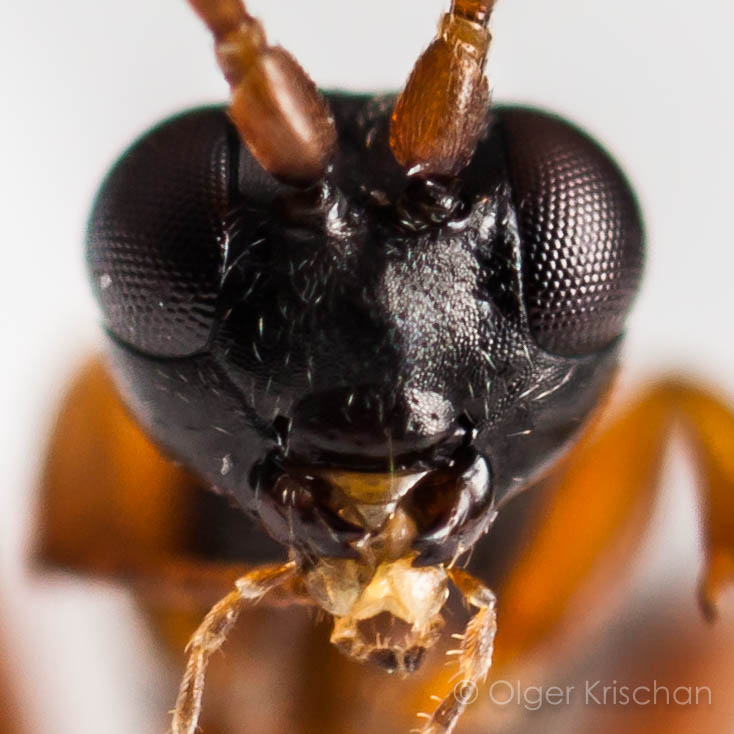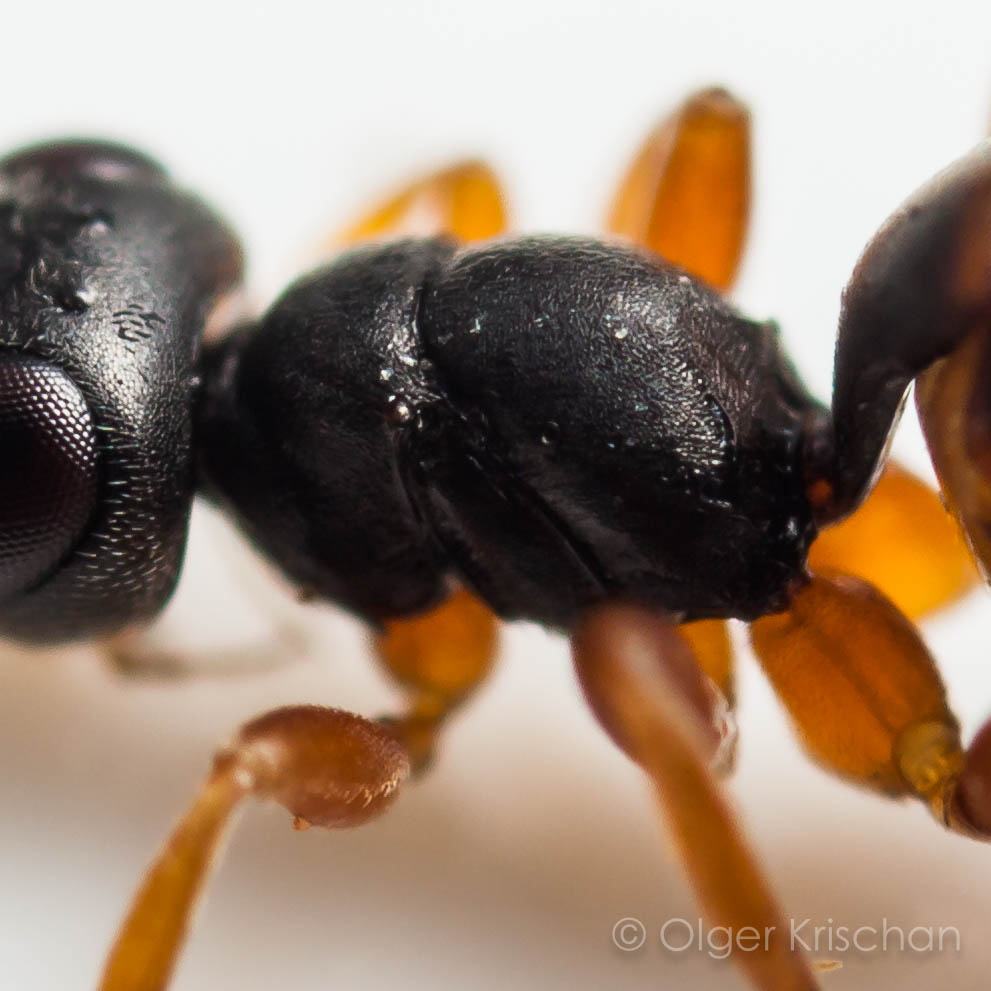Official name
Synonyms
Gelis spurius [1]
Pezomachus spurius [5]
see more on: www.gbif.org

CONTENTS
1. Distribution
2. Behaviour
3. Plant relations
4. Parasitic relations
5. Identification
1. DISTRIBUTION
The ichneumon wasp Gelis spurius is a common wasp in the Netherlands [2].
2. BEHAVIOUR
2.1. ACTIVITY
The female can be found the whole year through and overwinter as adults [3].
The specimen used in this post was caught in februari, see here.
It is suspected the species is multivoltine [3].
2.2. DEVELOPMENT
The species is an idiobiont ectoparasitoid that can occur as primary and as well as secundary pseudohyperparasitoid on ichneumonid and braconid wasps [3,4].
3. FOOD PLANTS
The adults wasps feed on nectar and honeydew [3]. Flower visits are limited to specific weather conditions, like during drizzle or muggy weather and is probably secondary to licking up honeydew and moist from leaves [3]. Possibly pollen grains stuck on the sticky surfaces of hairy leaves are eaten as well [3].
In literature the following plants and groups are cited in the context of licking up food and moisture:
| Birch family (Betulaceae) | – Corylus avellana (Common hazel) [3] – Alnus alnobetula (Green alder) [3] |
| Netle family (Urticaceae) | – Urtica dioica (Stinging nettle) [3] |
Garden species
In the garden the following plants are present:
| Birch family (Betulaceae) | – Corylus avellana (Common hazel) |
| Netle family (Urticaceae) | – Urtica dioica (Stinging nettle) |
Feeding in captivity
In order to be able to photograph the wasp properly I had kept her for a longer duration (few weeks) and fed her twice per day a cotton soaked in water and a cotton soaked in sugar water.
After two weeks (March 9) the wasp escaped during a photoshoot and I could not find her anymore. But after some time I noticed her on a dry cotton lying somewhere on the desk and she was clearly trying to drink from it. Apparently she was conditioned on the cottons during her captivity.
4. PARASITIC RELATIONS
Gelis spurius is connected as pseudohyperparasitoid on Ichneumonidae and Braconidae, and can be found / is reared from a wide range of hosts.
The following prey groups and species occurring in the Netherlands [1] are cited in literature, including the primary host (hyperparasitism):
| Flies (Diptera) | Lauxaniidae Sapromyza [4] Tephritidae Rhagoletis – Rhagoletis alternata [4] |
| Moths (Lepidoptera) | Adelidae Adela – Adela reaumurella [4] of Incurvariidae Incurvaria – Incurvaria pectinea [4] Psychidae Dahlica [4] Psyche – Psyche casta [4] |
| Wasps (Parasitica) | Braconidae Apanteles [4] Coeloides – Coeloides scolyticida [4,6] parasite on: Scolytus scolytus or Scolytus multistriatus Microplitis – Microplitis mandibularis [4,6] parasite on Noctuidae Ichneumonidae Hyposoter [4] parasite on: – Melitaea cinxia |
5. IDENTIFICATION
Length: 1,8 – 4,4 mm
Female are apterous [4].
Males are brachypterous or macropterous [4].
Genus
The genus Gelis can be recognized by the following characters:
1. 2nd and 3rd tergites fully separated, or only partially or unclearly merged [5] (here clearly separated)
2. 1st tergite with or without dorsal lateral carina [5] (here with carina)
3. 1st tergite not or rarely apically striped [5] (here not striped)
4. When tergite 1 apically striped than laterotergite of the 2nd abdominal segment separated and wide [5] (Here not the case)
♀

HEAD
1. Head black [4]
2. Flagellum segments basally or entirely orange- to yellowbrown [4]
3. Seldom scapus (antennal segment 1) partly dark [4]
3. Antenna with 16-19 segments [4]
4. Antennal segment 3 is 2,2-2,5x longer than wide (here 2,4x) (lateral view) [4]
5. Antennal segment 7 is 1,1-1,6x longer than wide (here 1,6x) (lateral view) [4]
6. Head structure granulated [4]

7. Distance between rear ocelli ( OOL ) is about 0,7-1,2x the distance between the rear ocellus and the inner eye edge ( POL ) [4] (here ±1,2x)

8. Head behind eyes somewhat strongly to weakly narrowed [4]
9. Frons densely haired, finely to very finely puntured [4]
10. Cheek is 1,0-1,2x longer than mandible base width, 1,5x in small specimen (here ±1,0x) [4]
11. Malar space without a furrow or weakly developed [4] (here weakly developed)
12. Clypeus black, seldom brown (here black) [4]
13. Clypeus convex [4]
14. Clypeus with clear punctation [4]
15. Clypeus lower edge weakly convex or sometimes straight, without tooth
16. Upper mandible tooth somewhat longer than lower tooth [4]
17. Mandible, except for teeth, yellowbrown to reddish (here reddish) [4]
18. Palps brown to orangebrown [4]
19. Width eye is 1,8-2,1x length temple [5]
BORSTSTUK
1. Thorax black [4]
2. Mesonotum and pronotum not separated [4]
3. Mesonotum length = 0,5-0,7x width (here ±0,7x) [4]
4. Mesonotum almost flat or moderately convex [4]
5. Mesonotum front with weak indentation in middle [4]
6. scutellum not, or weakly limited, very short (here weakly limited) [4]
7. Furrow between mesonotum and propodeum level and narrow [4]
8. Length mesonotum = 0,5-0,7x length area anterior [6]
9. Mesosternum clearly shorter than width basal flagellum segment (segment 3) [4]
10. Propodeum dorsally densely haired, not clearly less than mesonotum [4]
11. Propodeum dorsally convex, as a rule not higher than mesonotum [4]
12. Propodeum with transverse carina, in middle widely interrupted or only indicated [4]
13. Legs orange to orangebrown [4]
14. Femora 3 (hindleg) 3,2-3,6x longer than high (here ±3,3x) [4]
15. Tibia 3 (hindleg) thickend, 5,3-6,0x longer than high (here ±5,3x) [4]
16. Shin 3 (hindleg) dorsally densely haired [4]
ABDOMEN
1. Abdomen black [4]
2. Tergites from tergite 2 laterally orange- to yellowbrown [4]
3. Tergites from tergite 6 of 7 entirely orange- to yellowbrown [4]

4. Narrow apical edges tergites orange- to yellowbrown [4]
5. Edges tergite 2 orange- to yellowbrown [4]
6. Abdomen densely haired [4]
7. Length tergite 1 is 1,3-1,6x width [4]
8. Length laterotergite tergite 2 is 3,1-4,8x width (here ±3,1x) [4]
9. Ovipositor shafts are 0,6-0,7x longer than shin III (hindleg) (here ±0,7x) [4]
10. Ovipositor with clear teeth ventrally [4]
♂
Literature
1 Nederlands Soortenregister2 Waarneming.nl
3 SCHWARZ, M. Revision der westpaläarktischen Arten der Gattungen Gelis THUNBERG mit apteren Weibchen und Thaumatogelis SCHMIEDEKNECHT (Hymenoptera, Ichneumonidae). Teil 2.
4 SCHWARZ, Martin. Revision der westpaläarktischen Arten der Gattungen Gelis Thunberg mit apteren Weibchen und Thaumatogelis Schwarz (Hymenoptera, Ichneumonidae). Teil 3. na, 2002.
5 SCHWARZ, Martin. Revision der westpaläarktischen Arten der Gattungen Gelis Thunberg mit apteren Weibchen und Thaumatogelis Schmiedeknecht (Hymenoptera, Ichneumonidae). Teil 1. na, 1995.
6 Schwarz, Martin & Shaw, Mark. (1999). Western Palaearctic Cyptinae (Hymenoptera: Ichneumonidae) in the National Museum of Scotland, with nomenclatural changes, taxonomic notes, rearing records and special reference to the British check list. Part 2. Genus Gelis thunberg (Phygadeuontini Gelina). Entomologist's Gazette. 50. 117-142.
















































